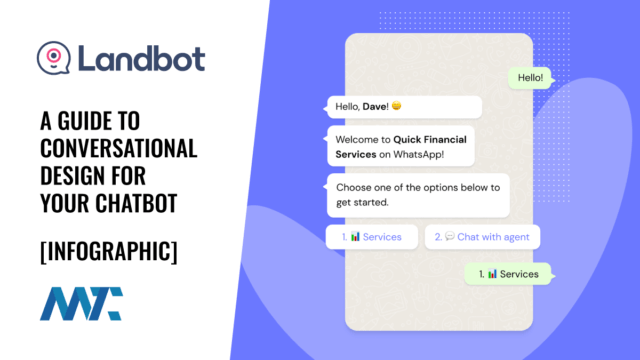Chatbots continue to get increasingly sophisticated and provide a much more seamless experience for site visitors than they did a year ago. Conversational design is at the heart of every successful chatbot deployment… and every failure.
Chatbots are being deployed for automating lead capture and qualification, customer support and frequently asked questions (FAQs), onboarding automation, product recommendations, human resource management and recruiting, surveys and quizzes, booking, and reservations.
Expectations of site visitors have grown. They expect to find what they need and contact you or your business quickly if they need additional assistance. The challenge for many businesses is that the number of conversations necessary to sift through for a real opportunity is typically tiny. So, companies often use lead forms to try and pick out the opportunities they think are better and ignore the rest.
Form submission methodologies have a huge downfall, though… response time. If you don’t promptly respond to every valid request, you’re losing business. Quite honestly, it’s an issue with my site. With thousands of visitors a month, I can’t support responding to every question – my revenue doesn’t support that. At the same time, I know I’m missing out on opportunities that could come through the site.
Chatbot Strengths and Weaknesses
That’s why companies are incorporating chatbots. Chatbots have strengths and weaknesses, though:
Authenticity: If you fake that your chatbot is human, your visitor will likely figure it out, and you’ll lose their trust. If you’re going to enlist the help of a bot, let your visitor know they’re a bot.
Complexity: Many chatbot platforms are horrifically challenging to use. While their visitor-facing experience may be beautiful, the ability to build and deploy a helpful bot is a nightmare. I know… I’m a technical guy that programs and can’t figure out some of these systems.
Optimization: Conversational decision trees must be carefully analyzed and optimized to improve conversion rates with your bot. It’s not enough to slap a bot up with a few qualification questions – you may as well use a form, then.
Natural Language Processing: Chatbots must incorporate superior natural language processing (NLP) to fully understand your visitor’s urgency and sentiment; otherwise, the results will be frustrating and drive visitors away.
Handoffs: Chatbots have limitations and should seamlessly hand off the conversation to actual people on your staff when necessary.
Integration: Chatbots should provide your sales, marketing, or customer service teams with rich data through notifications and integrations to CRM or support ticketing systems.
In other words, chatbots should be easy to deploy internally and have an exceptional user experience externally. Anything less will fall short. Interestingly enough… what makes a chatbot effective are the same principles that make a conversation effective between two or more people.
The art of designing and improving your chatbot’s interaction with visitors is known as conversational design.
A Guide to Conversational Design
This infographic from Landbot, a chatbot platform focused on conversational design, incorporates planning, prediction, and execution of a successful conversational chatbot strategy.
Conversational design incorporates copywriting, voice and audio design, user experience (UX), motion design, interaction design, and visual design. It walks through the three pillars of conversational design:
Cooperative Principle – underlying cooperation between the chatbot and the visitor enables the use of inexplicit statements and conversational shortcuts to advance the conversation.
Turn-Taking – timely turn-taking between the chatbot and the visitor is essential to resolving ambiguity and providing an effective conversation.
Context – conversations respect the visitor’s physical, mental, and situational context.
To plan your chatbot, you must:
Define your audience
Define the role and chatbot type
Create your chatbot persona
Outline its conversational role
Write your chatbot script
To accomplish an effective conversation between a bot and a visitor, user interface elements are needed – including a greeting, questions, informational statements, suggestions, acknowledgments, commands, confirmations, apologies, discourse markers, errors, buttons, audio, and visual elements.
Here’s the full infographic… The Ultimate Guide to Conversational Design:
Landbot has an incredibly detailed post on how you can plan and deploy your chatbot on their site.
Read Landbot’s Full Article on Conversational Design
Landbot Video Overview
Landbot empowers businesses to design conversational experiences with rich UI elements, advanced workflow automation, and real-time integrations.
Website chatbots are Landbot’s strengths, but users can also build WhatsApp and Facebook Messenger bots.
©2023 DK New Media, LLC, All rights reserved.
Originally Published on Martech Zone: Landbot: A Guide to Conversational Design For Your Chatbot

